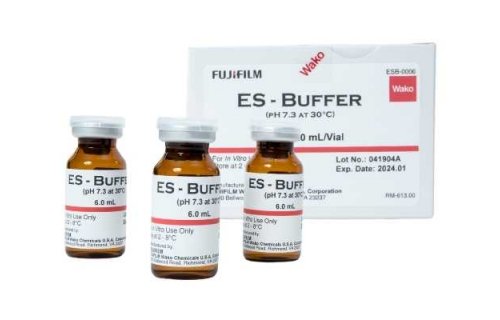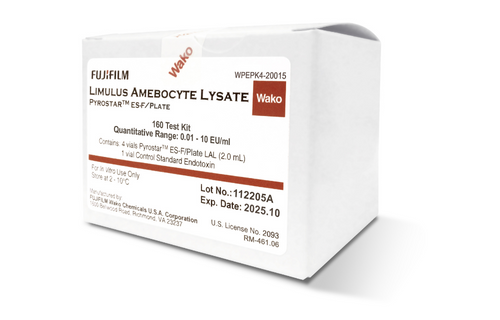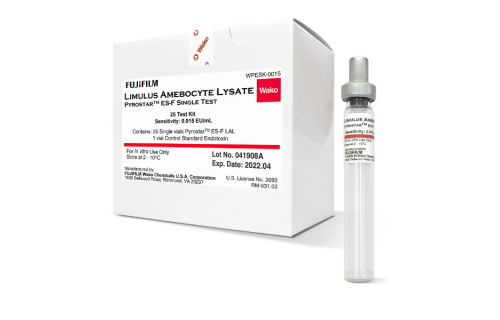10 Settings where the LAL Assay can be used
Endotoxins cause inflammation and fever and have been implicated in the pathogenesis of sepsis. They are important components of the outer membrane of gram-negative bacteria and are environmentally ubiquitous. The parenteral administration of endotoxins is associated with very serious and potentially disastrous adverse effects. Therefore, endotoxin screening is routinely performed in the pharmaceutical industry as well as in research context. The Limulus amebocyte lysate (LAL) assay is the most widely used test for endotoxin assessment with proven validity and reliability. It is based on the incubation of an amoebocyte extract from the horseshoe crab with an endotoxin-containing sample, which leads to the formation of a clot.1
Here are ten of the settings, in which the LAL assay has been widely used:
1. To screen injectable solutions Injectable pharmaceutical products should comply with very strict limits for endotoxin content. Endotoxin contamination of injectable solutions should be avoided at all costs, because it would provoke strong adverse effects, especially when the products are administered intravenously.2 When no interfering substances are present in a drug formulation, LAL testing should be performed using undiluted samples.3
2. In renal dialysis centers Both water and dialysate solutions used for renal dialysis should comply with strict quality regulations, including endotoxin limits, because contaminants can lead to very serious adverse patient outcomes.4
3. To screen medical devices Certain medical devices, such as porcine heart valves or complex orthopedic devices, carry the risk of endotoxin contamination.2 The stringent regulatory limits for endotoxins depend on the intended use of the device and on the tissues that it comes in contact with. Devices may be flushed, immersed, or disassembled to prepare eluates for testing.3
4. To assess recombinant drugs – Recombinant drugs may also be contaminated with endotoxins. This is especially true for recombinant drugs produced in E. coli, which require an endotoxin removal step. Endotoxin contamination and removal can be evaluated with the LAL assay.5
5. Assessment of biological therapeutics – Certain biological therapeutics, such as insulin, clotting factors, and some vaccines, are also at risk of endotoxin contamination and should be tested.6
6. To advance endotoxin research – Endotoxins and the mechanisms implicated in their effects are a subject of active investigations. Endotoxin assessment using the LAL assay is an important part of endotoxin research.2
7. To screen anti-endotoxin drug candidates – As endotoxins have strong pyrogenic effects, the development of optimized anti-endotoxin drugs is an important research area. The LAL assay enables screening of anti-endotoxin drug candidates before they can progress to further drug development phases.2
8. To test laboratory equipment – To ensure reliable research results, laboratory equipment should be free of endotoxin contamination. Thus, the LAL assay can be used to test labware for endotoxins, if suspicion of contamination arises.
9. To analyze seawater – Seawater and marine sediments contain endotoxins. Moreover, endotoxin measurement with the LAL assay may serve as an indicator of the bacterial content of marine water.2,7
10. To screen for endotoxin contamination of the air – Endotoxin inhalation may lead to airway dysfunction and inflammation. This problem arises most commonly due to occupational exposure but can also occur in areas close to sources emitting endotoxins.
Literature sources:
- https://www.fda.gov/inspections-compliance-enforcement-and-criminal-investigations/inspection-technical-guides/bacterial-endotoxinspyrogens
- Novitsky TJ. Biomedical applications of Limulus Amebocyte lysate. J.T. Tanacredi et al. (eds.), Biology and Conservation of Horseshoe Crabs, DOI 10.1007/978-0-387-89959-6_20, Springer Science+Business Media, LLC 2009
- FDA. Guidance for industry: pyrogen and endotoxins testing: questions and answers. June 2012.
- Coulliette AD, Arduino MJ. Hemodialysis and water quality. Semin Dial. 2013;26(4):427-38. doi: 10.1111/sdi.12113.
- Sandle T. Removal of endotoxin from protein in pharmaceutical processes. American Pharmaceutical Review. 2016, July 29.
- Trivedi B, Valerio C, Slater JE. Endotoxin content of standardized allergen vaccines. J Allergy Clin Immunol. 2003;111(4):777-83. doi: 10.1067/mai.2003.1338.
- Sattar AA, Jackson SK, Bradley G. The potential of lipopolysaccharide as a real-time biomarker of bacterial contamination in marine bathing water. J Water Health 2014;12(1):105–112. doi: https://doi.org/10.2166/wh.2013.142






